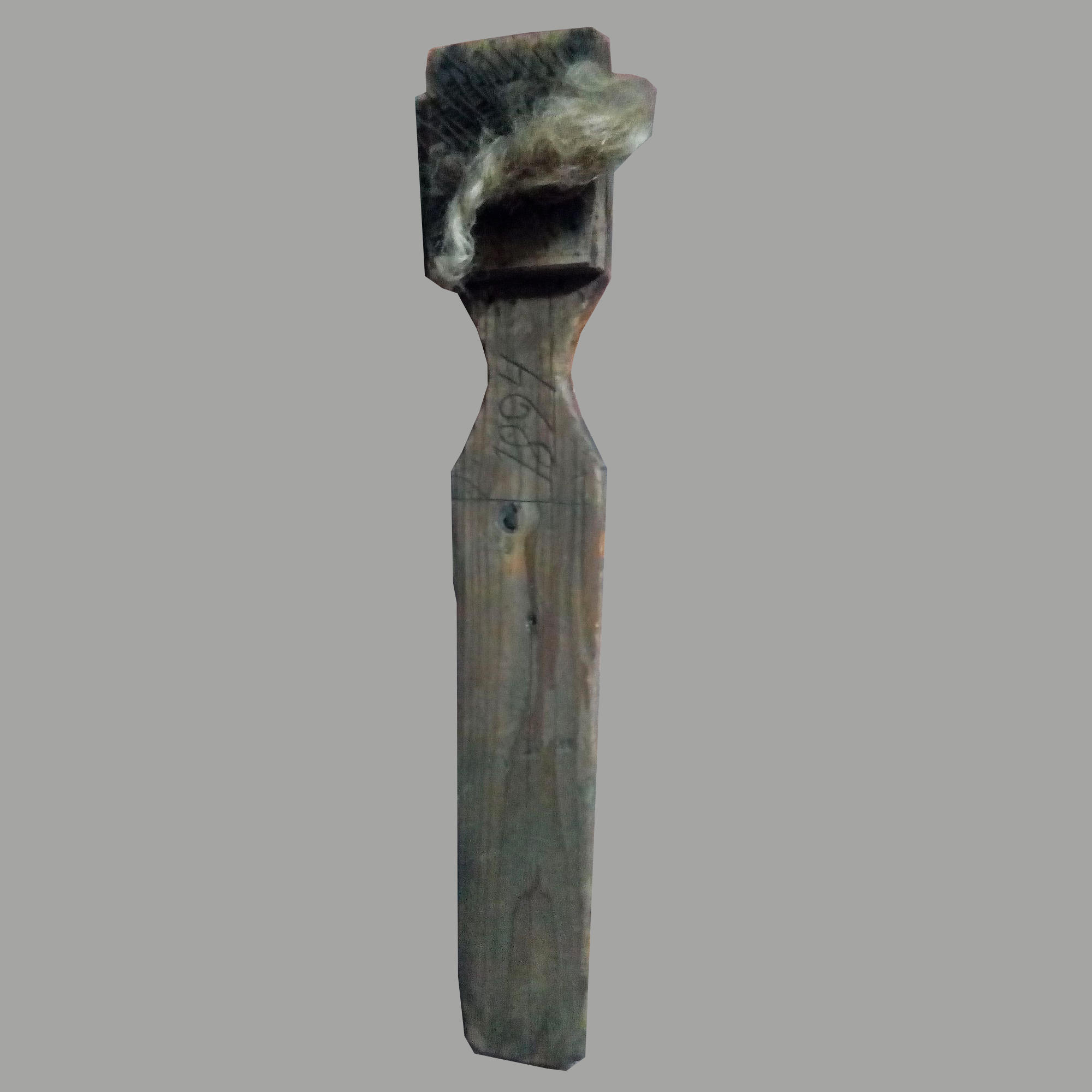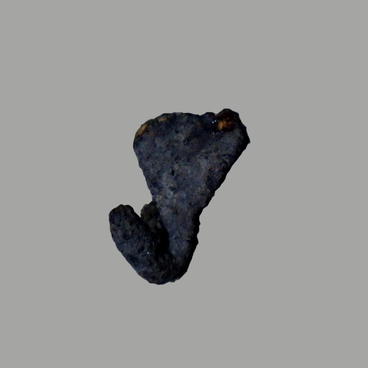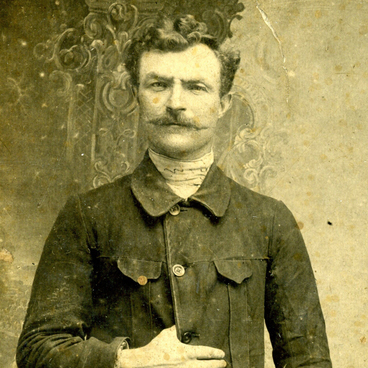In the old days, flax was processed using a tool consisting of a rectangular board with seven rows of forged sharp spikes, which was called a hackle.
It was only in the 19th century that flax growing started extensively developing in West Siberia. However, the rate and scale of local linen manufacturing was far behind its production in the European part of Russia, where, according to specialists, the hackle presented in the museum’s collection was made.
Flax dressing consisted of several stages. First, it was scutched to separate flax fibre threads from the stalk. The resulting waste was not disposed of, but was used to make twisted tows and coarse ropes, bedding for cattle and caulk log buildings.
Scutching was followed by the hackling process. In the middle part of Russia and some provinces further north including Siberia, it was hackled on a wooden strickle using a small comb. Thereupon, it was combed two to four times with iron and wooden brushes with pork bristles. The spikes of each subsequent brush were finer than those of the previous one. It was done to remove coarse fibres, whereas fine, high-grade ones stayed on the brush.
The short-staple flax fibres obtained through the first hackling were called the tow. They were normally used for making coarse irregular fabrics. The long-staple fibres were given to spinners, who made them into sliver representing rough threads for subsequent making of fabric.
Hackling was the last stage of flax processing and preparation. Once it was completed, owners calculated how much flax they had to keep, and how much of it they could sell. Flax was measured in handfuls. Twenty handfuls of scutched and hackled flax twisted into a loose skein made up a wad. Wads were strapped and kept in a cool room until they time of sale.
Researchers note that hackles are much less commonly found in the collections of Siberian museums than mechanical spinning wheels. It means that in the late 19th - early 20th centuries manual flax processing technology described above was hardly used in Siberia and local craftswomen worked mostly with tows, hackled flax fibers ready for spinning.
It was only in the 19th century that flax growing started extensively developing in West Siberia. However, the rate and scale of local linen manufacturing was far behind its production in the European part of Russia, where, according to specialists, the hackle presented in the museum’s collection was made.
Flax dressing consisted of several stages. First, it was scutched to separate flax fibre threads from the stalk. The resulting waste was not disposed of, but was used to make twisted tows and coarse ropes, bedding for cattle and caulk log buildings.
Scutching was followed by the hackling process. In the middle part of Russia and some provinces further north including Siberia, it was hackled on a wooden strickle using a small comb. Thereupon, it was combed two to four times with iron and wooden brushes with pork bristles. The spikes of each subsequent brush were finer than those of the previous one. It was done to remove coarse fibres, whereas fine, high-grade ones stayed on the brush.
The short-staple flax fibres obtained through the first hackling were called the tow. They were normally used for making coarse irregular fabrics. The long-staple fibres were given to spinners, who made them into sliver representing rough threads for subsequent making of fabric.
Hackling was the last stage of flax processing and preparation. Once it was completed, owners calculated how much flax they had to keep, and how much of it they could sell. Flax was measured in handfuls. Twenty handfuls of scutched and hackled flax twisted into a loose skein made up a wad. Wads were strapped and kept in a cool room until they time of sale.
Researchers note that hackles are much less commonly found in the collections of Siberian museums than mechanical spinning wheels. It means that in the late 19th - early 20th centuries manual flax processing technology described above was hardly used in Siberia and local craftswomen worked mostly with tows, hackled flax fibers ready for spinning.



